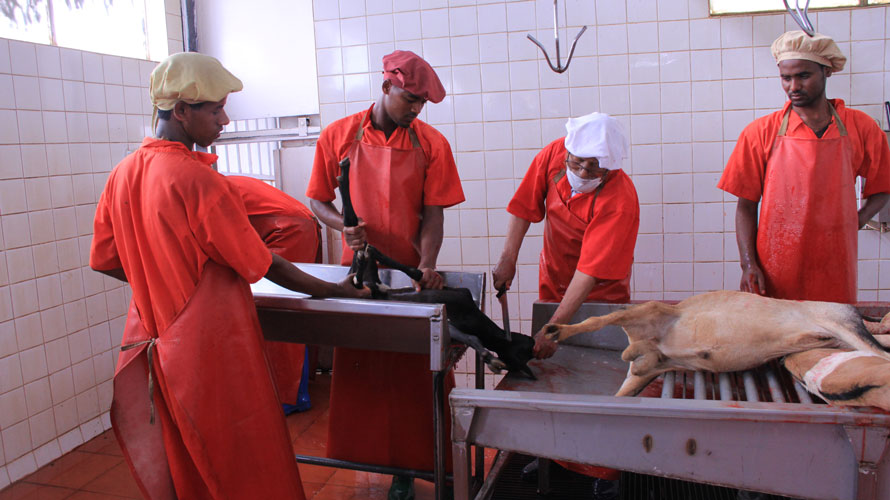The animals are selected properly.
The animals are selected from standard farmers and suppliers.
Receiving
The animals are brought in from standard farmers and suppliers, using company vehicles.
Unloading
The animals are unloaded form the trucks.
Screening
After the animals are unloaded they are screened before being transfered to to the holding shelters.
Transferring To The Holding Shelter
The animals are transfered to the holding shelter.
Transferring To The Lairage
After they rest well, the animals are transfered to the Lairage.
Anti-Morteum Inspection
The animals are then inspected carefully before they are slaughtered.
Slaughtering Hall
The animals are then transfered into the slaughtering hall.
Slaughtering
Once in the slaughtering hall they are made to go in one by one for the slaughtering.
Hoisting
Once they are slaughtered they are hoisted on a mechanical hook. This helps to drain the rest of the blood out.
Flanking
Once they are decapitated completely they pass for the flanking process. This is where the limbs are removed so the animals can be skinned.
Skinning
Modjo has experienced skinners who skin the animals with extreme care and efficiency.
Evisceration
Once they are skinned, the animals’ offal is removed, in this Evisceration process.
Post Morteum Inspection
After evisceration, the carcass, along with the removed offal is inspected before passing on to the washing process.
Carcass Weighing
After the carcasses are inspected they are weighed. The Pastoralists are paid according to this weight.
Carcass Washing
After the animals are weighed they are hoisted back on the hook to pass through the washing cabinet. Here they are washed by pressurized water.
Trimming
The carcass is then carefully trimmed to remove unwanted parts of the skin and meat.
Decontamination
Once properly trimmed, the carcasses are sprayed with organic acid to decontaminate them.
Dripping
The carcasses are then left to drip the rest of the blood if there is any left before they are transfered into the chiller rooms.
Chilling
Once the carcasses are moved into the chiller rooms, where they are chilled properly.
Packaging Room
Once the carcasses are chilled properly, they are moved into the packaging room.
Labeling
The carcasses are labeled before they are packed. This helps to track the carcasses as they are shipped to customers.
Packing
The carcasses are covered carefully with stockinette to keep them fresh and clean till they get to the customers.
Weighing
Once the carcasses are packed properly, they are weighed one final time before they are loaded for shipping.
Loading
Once the carcasses are weighed, they are tied properly and hanged inside specialized transportation trucks owned by the abattoir.
Shipping
Once the carcasses are loaded they are ready for shipping. These specialized trucks are fitted with refrigerators to make sure the meat reaches customers fresh and safe.
Happy Customers
The abattoir delivers meat to happy customers, as it has done for over a decade.

